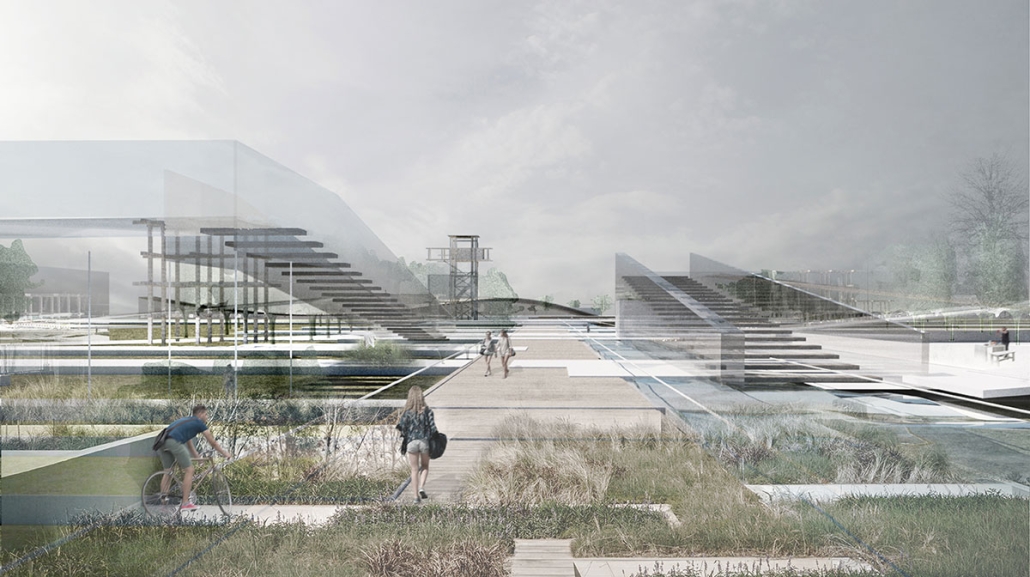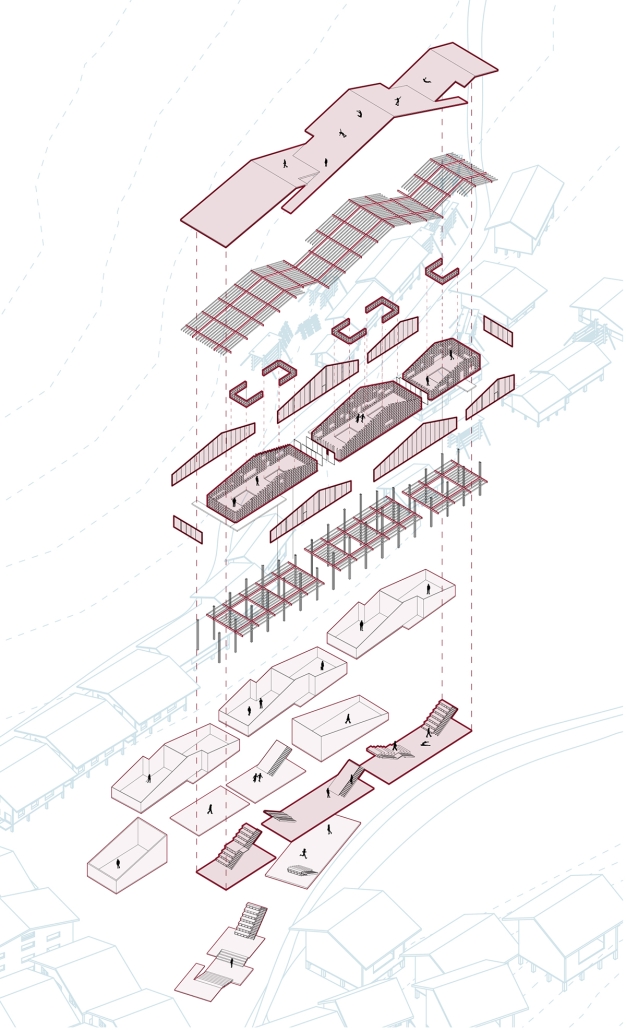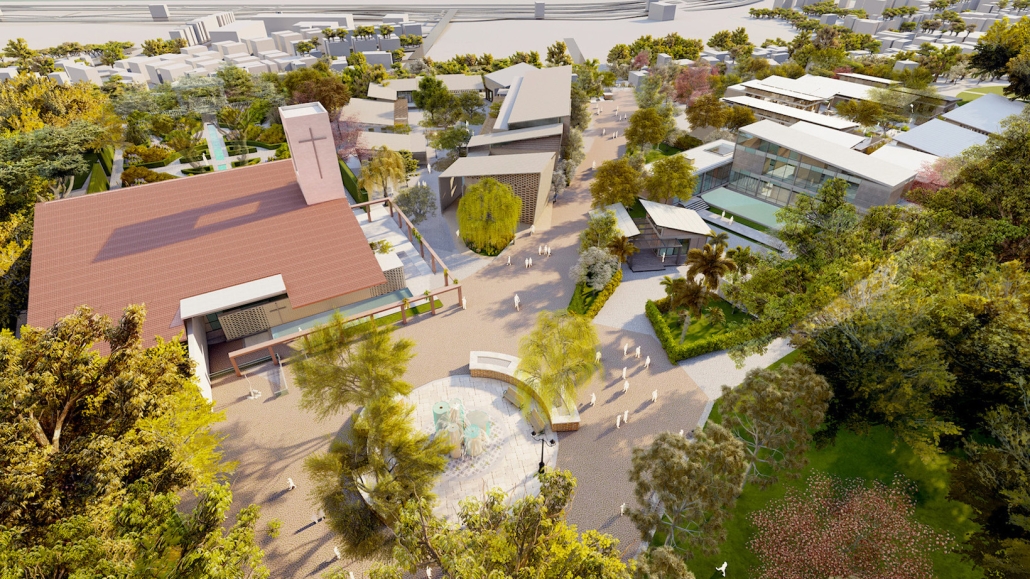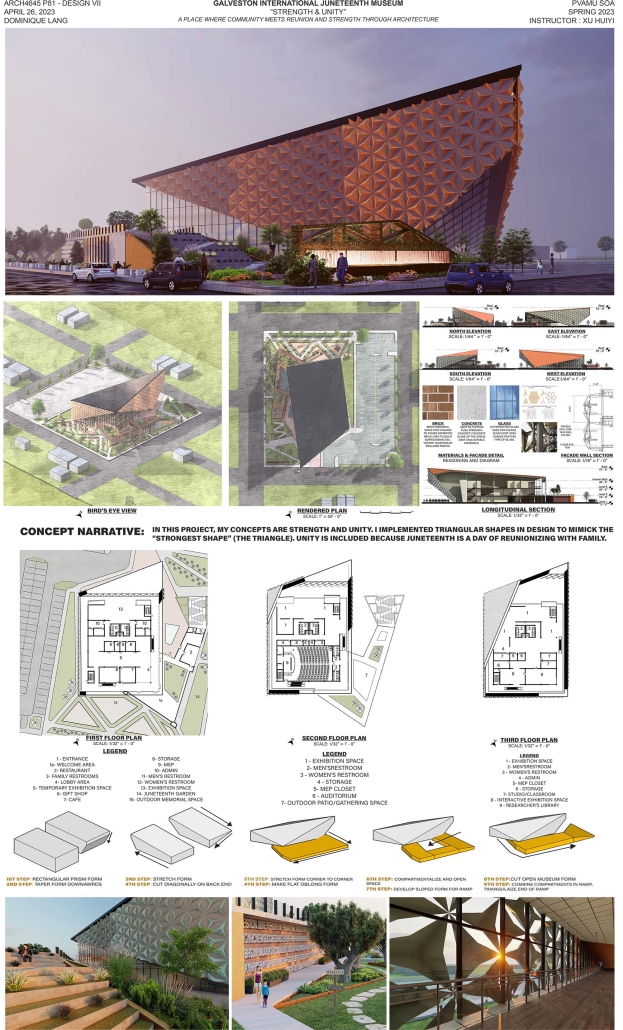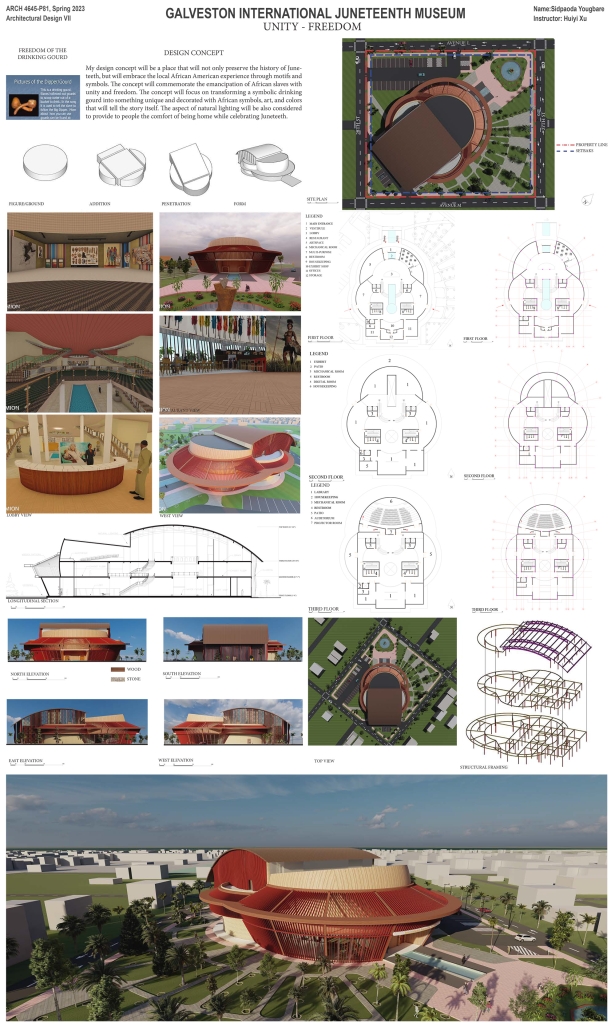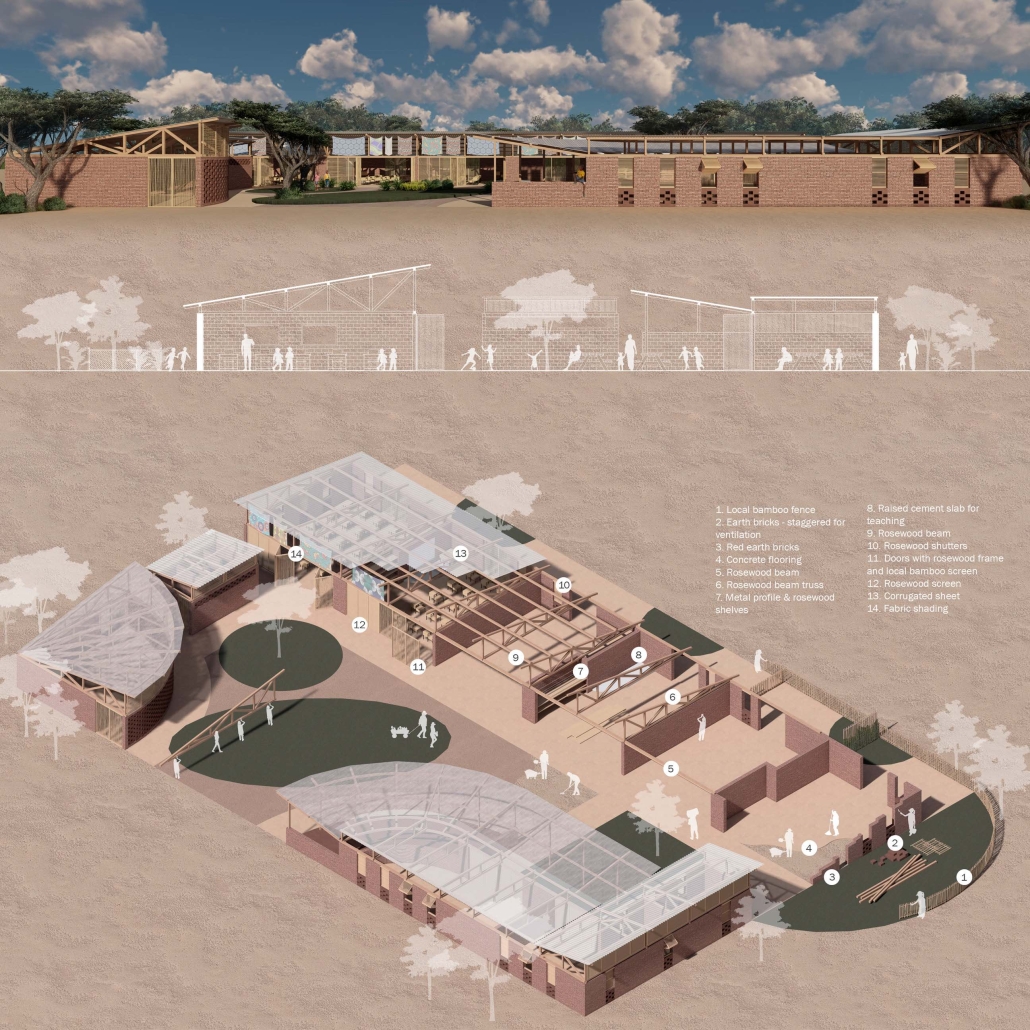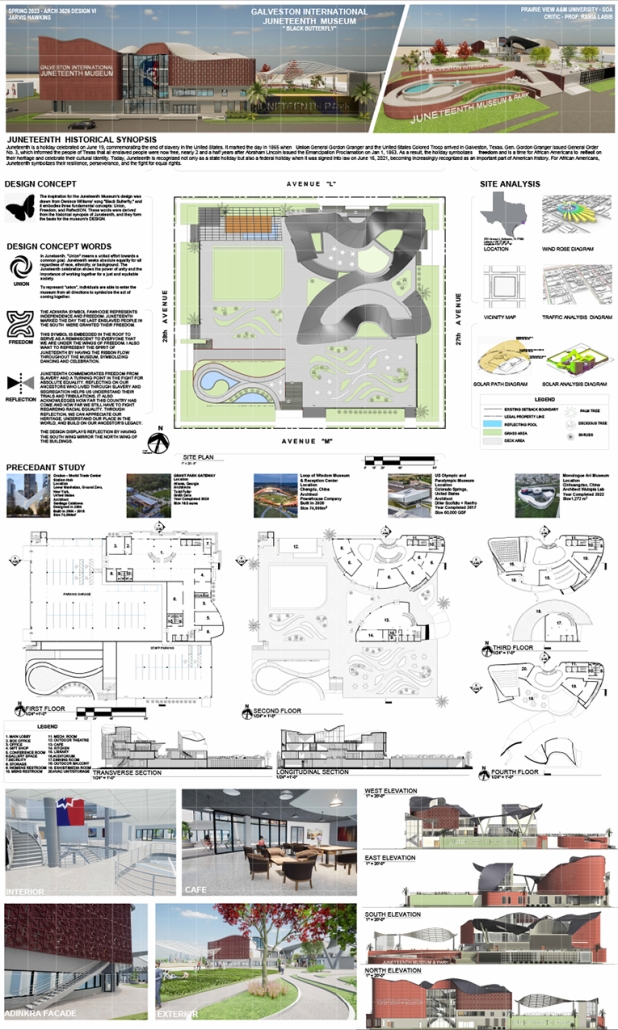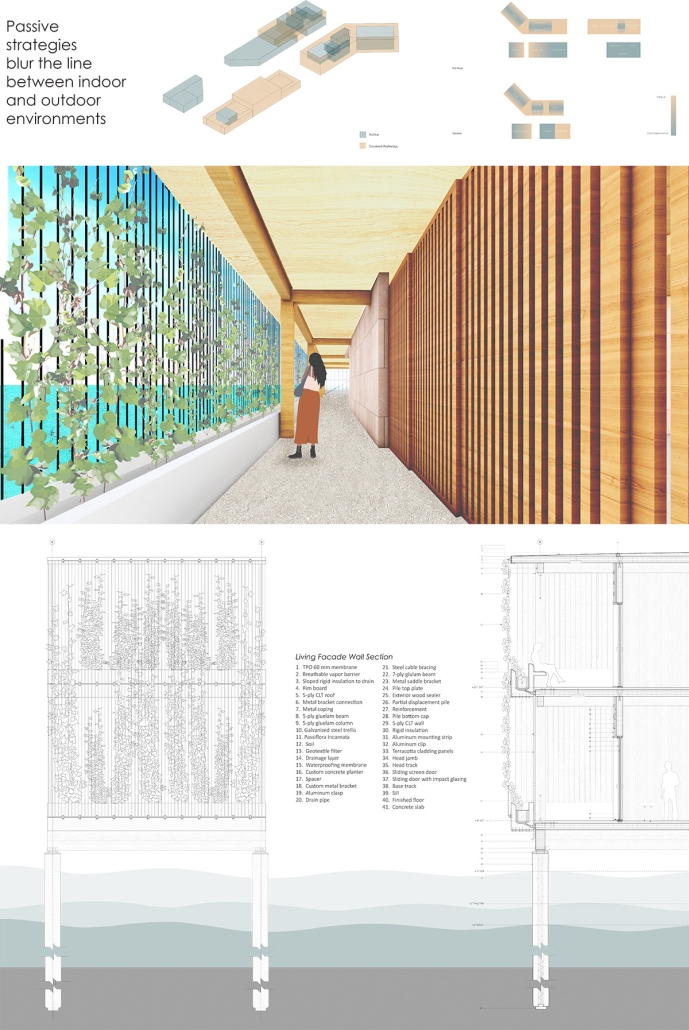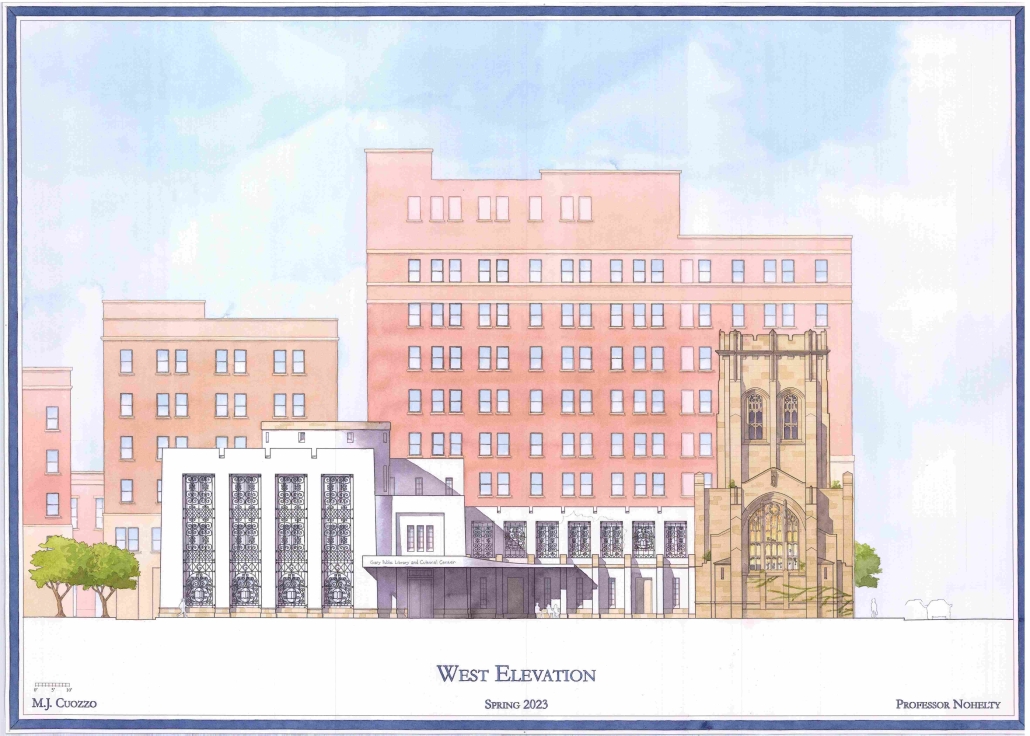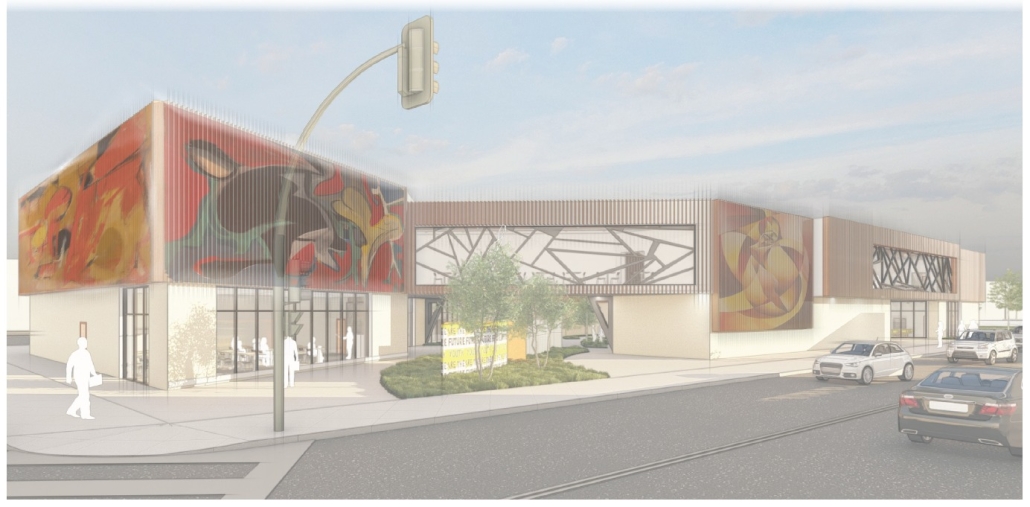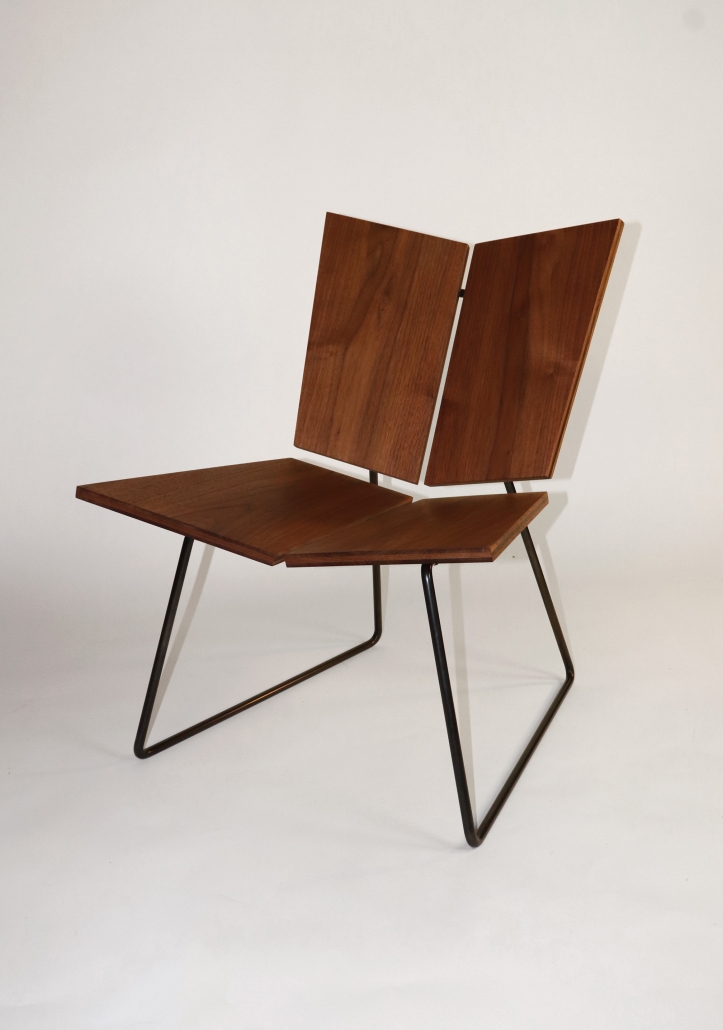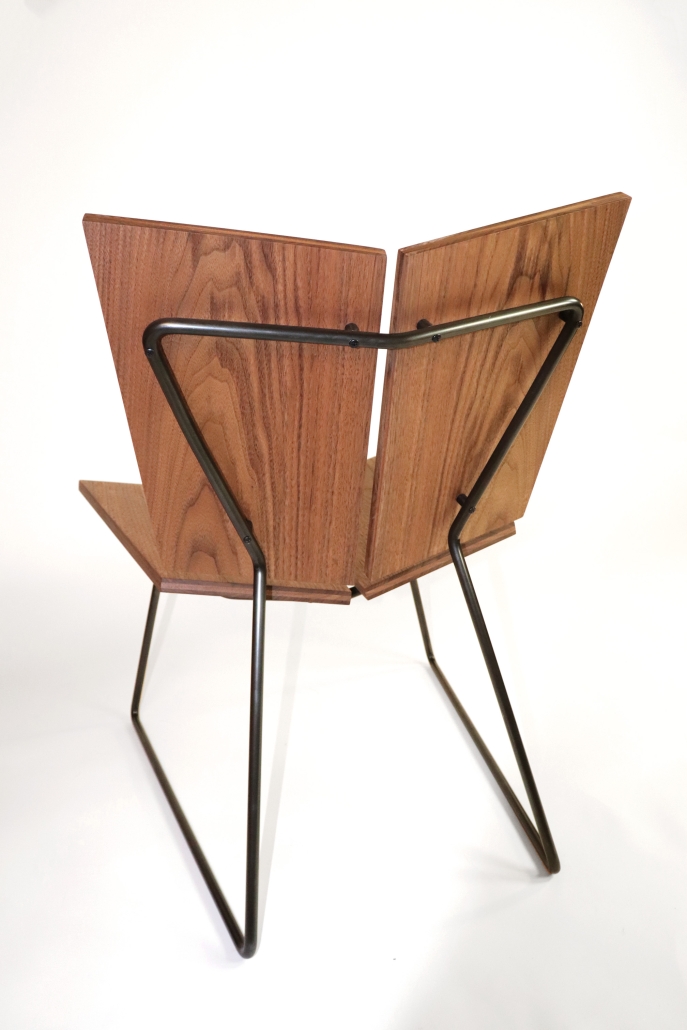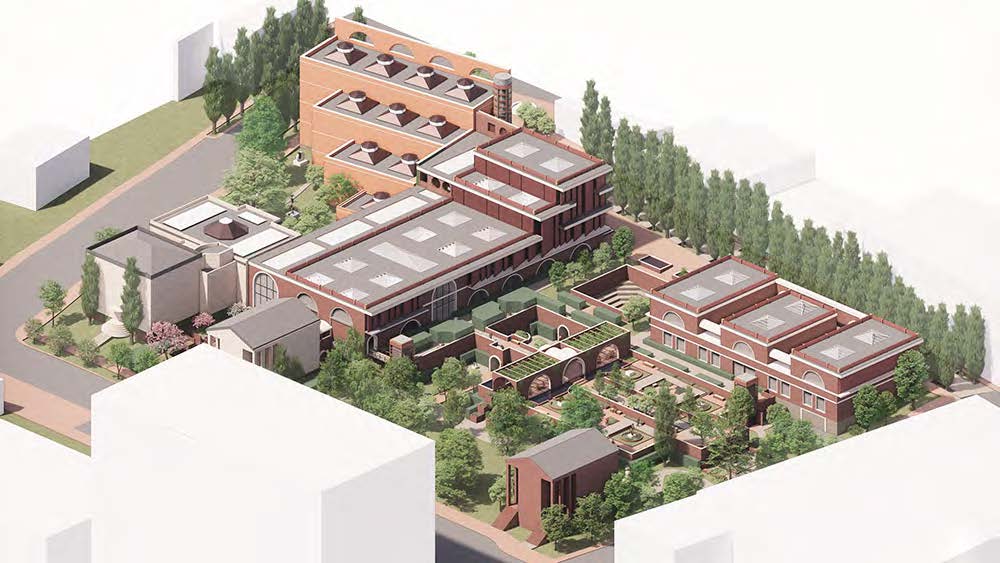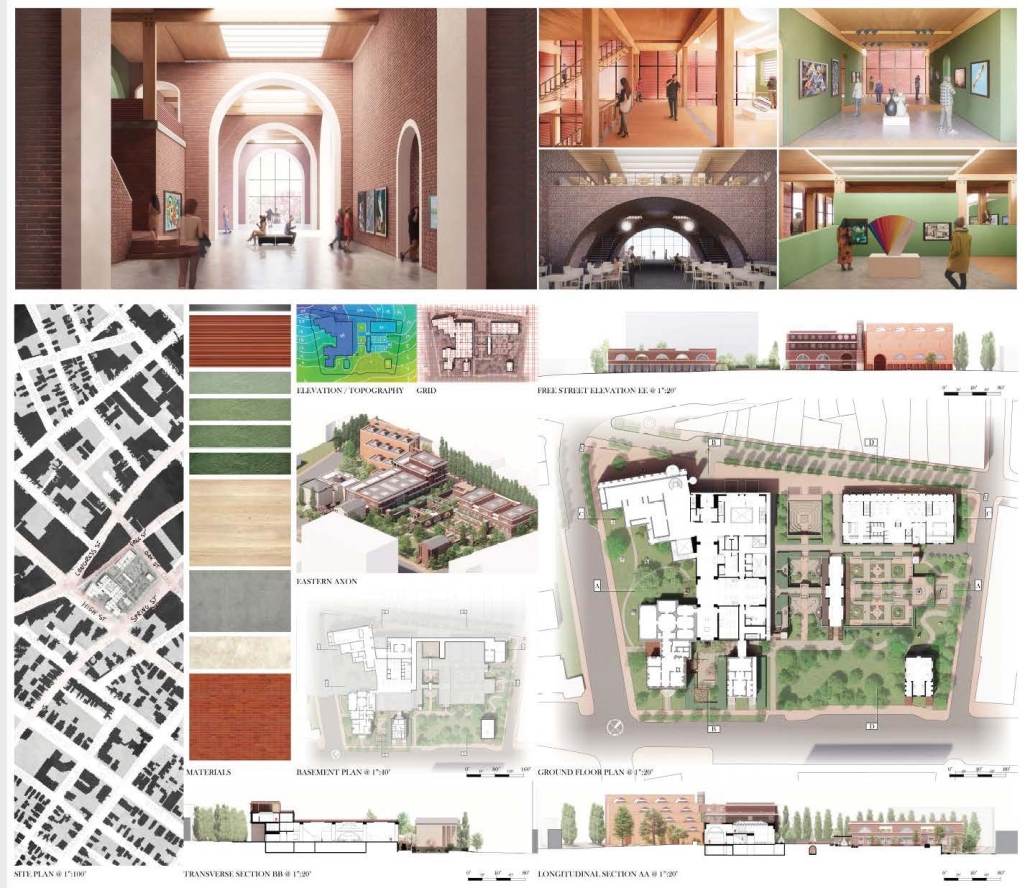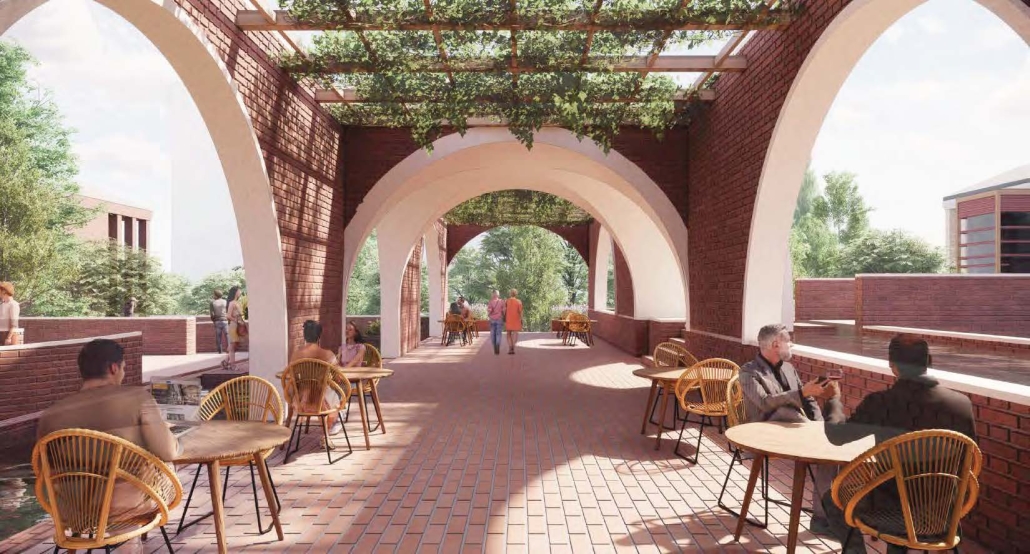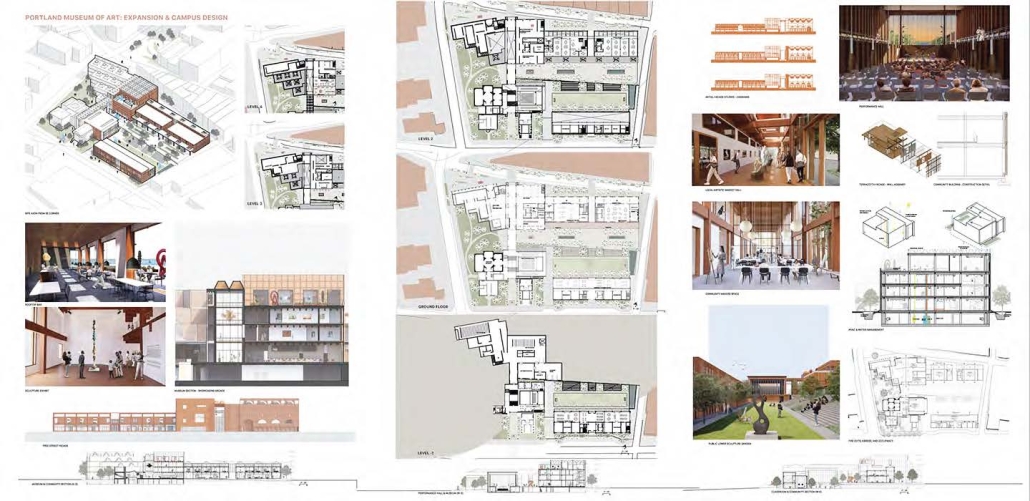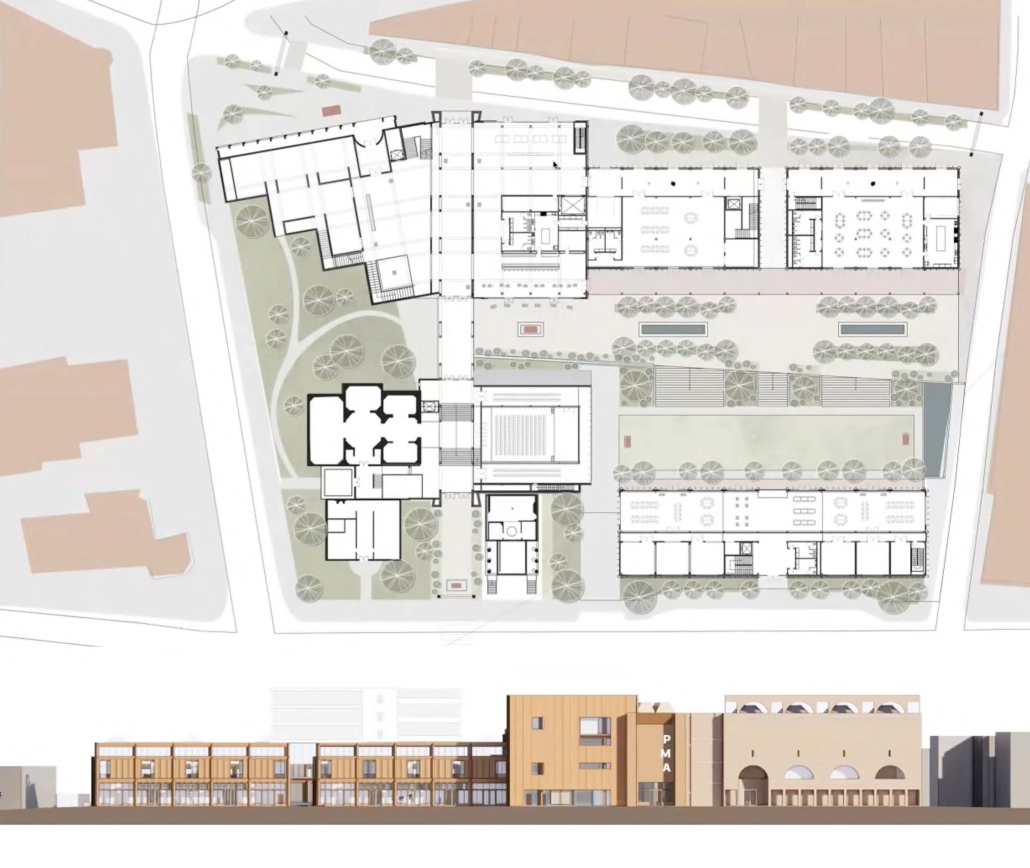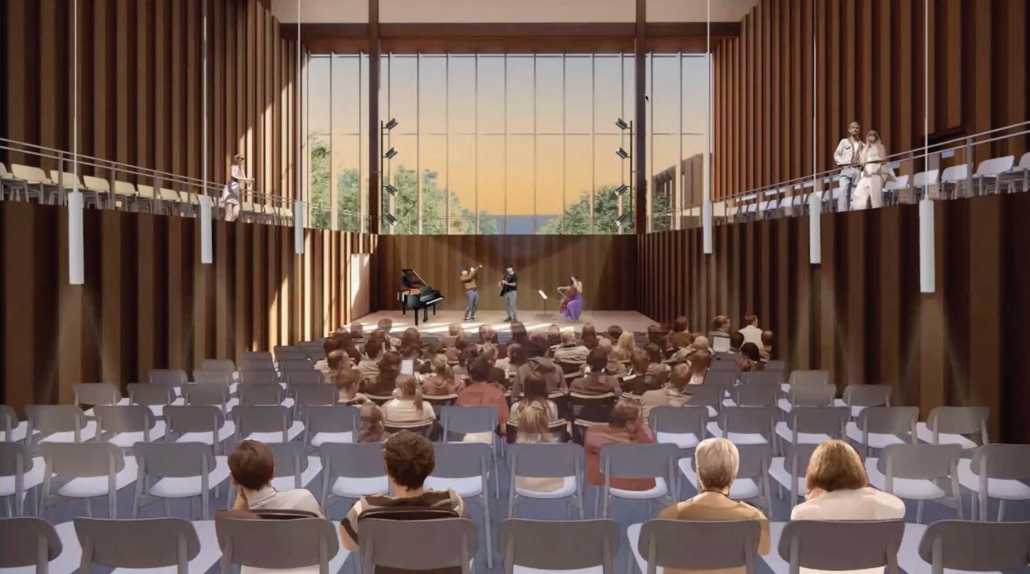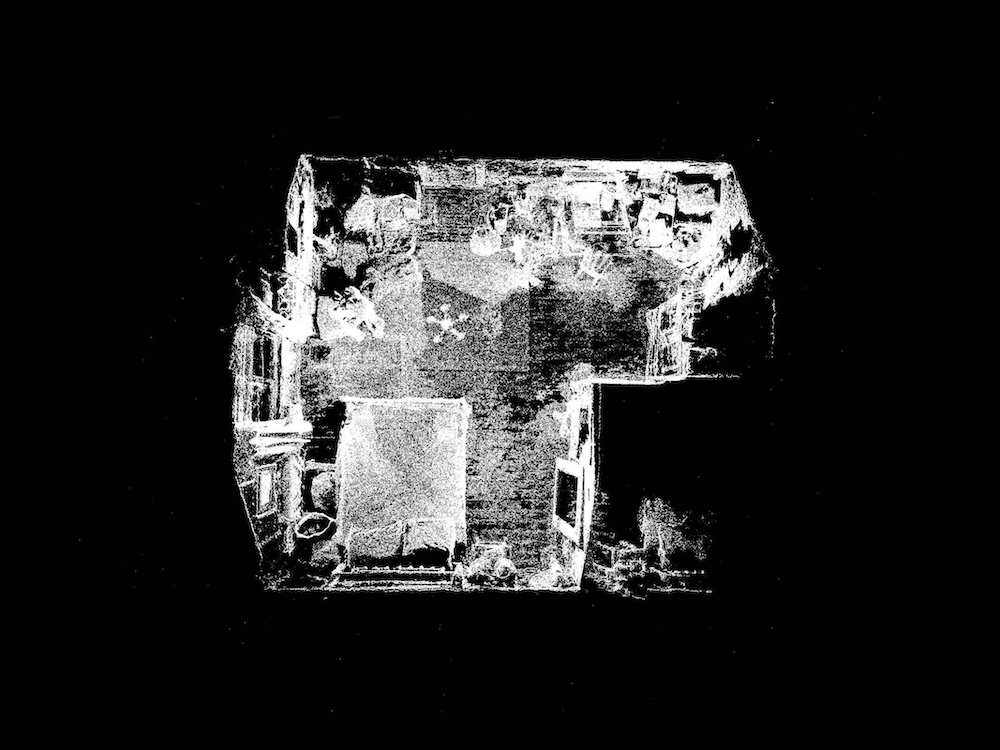A Musical Venue Composing a Symphony of Arts in Architecture by Lucciana Dib, M. Arch ‘23
Holy Spirit University of Kaslik | Advisor: Dr. Victor Takchi
The conception of music is based on cross-cultural beliefs providing an opportunity for people from all social and cultural backgrounds to express themselves through expressive art.
The site‘s characteristics, located in Ras Beirut, are based on five main focal points: the American University of Beirut (educational node), the Riviera Hotel (an iconic and historic/touristic node), Corniche Beirut (Beirut’s thriving linear public space – communal/ social node), and Bliss and Makhoul streets, reflecting the community’s motion and creative spirit while conveying musical significance through its vibrant nightlife.
Thus, the site encounters a dynamic and vibrant context incorporating significant historical landmarks, cultural and educational establishments, as well as socially active commercial spaces reflecting the city’s culture, its identity, and its motion.
Hence, the chosen site represents a musical and cultural node lying between two poles of attraction; a significant educational pole and a golden, historical, and touristic gem.
The general concept is based on reflecting the community’s cultural identity and its creative spirit through a project that conveys musical potential, aiming at accentuating the relationship between the city, the community, and the Mediterranean Sea.
The concept is based on the creation of a musical continuity from Beirut’s cultural and musical street, through a pedestrian axis directed towards Corniche Beirut; the creation of an urban corridor.
The incorporation of an urban corridor causes a significant “plot split” into two entities; one of which is oriented toward the American University of Beirut, the first pole of attraction, whereas the other is oriented towards the Riviera Hotel, the second pole of attraction. Moreover, the installation of an elevated platform at the ground floor level in connection with Corniche Beirut creates an open public plaza with musical potential, enhancing cultural and communal engagement.
The theater’s sloped platform is designed and intended to actively engage urban dwellers, elevating them out of the city on an unprecedented civic platform (connection cityscape – community – sea), whereas the opposing rooftop serves as a mere therapeutic sightseeing area oriented towards the city on one extremity and to the Riviera Hotel and the Mediterranean Sea on its opposing extremity.
Instagram: @luccianadib, @usekschoolofarchitecture




